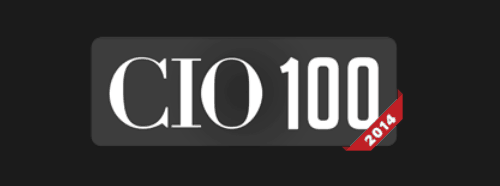
Darryl Salmons is Amey’s CIO, in charge of IT and innovation. He previously held this poisition at the Financial Services Authority and at De La Rue. Salmons was recently named among UK’s Top 100 CIOs. Here is an interview he gave to discuss his work at Ferrovial Services’ British subsidiary.
When did you start your current role?
January 1, 2013
Have you completed an MBA?
Yes, Henley
Order the following sources of advice/information by value to you:
1. Analyst
2. Consultant
3. Peer group
4. Vendors
5. In-house
What is the major transformational IT project that has been recently completed, or is underway at your organisation?
IT is undergoing a transformation where the data is now being augmented and combined with the underlying services to drive efficiencies and clear client differentiation.
This IT transformation process will result in a significant increase in the value of the underlying data which will become fundamental to the service itself.
What impact will it/does it have on the organisation?
The impacts on the organisation will be as follows:
• Data will drive transformational efficiencies
• The underlying data will gain an intrinsic value
• The value of the data will provide a competitive advantage
• Many facets of data will be accessed by clients, the operations and the public
• Data and the services will become inextricably linked
What new strategic technology deals has your organisation struck and with whom?
Framework agreements are currently being finalised with four partners
Name your strategic technology suppliers?
Framework agreements are currently being finalised with four partners. In addition we work with a number of other strategic partners including HP, Computacenter and 02.
How much is the IT operational spend compared to the revenue or company turnover as a percentage?
IT operational spend for 2013 combining both full year for Enterprise and Amey is in the region of £40m. This is approx 1.9% of turnover, although it excludes a range of IT related separate customer focus technology contracts that would significantly increase this figure
What is the strategic aim of the CIO and IT operations for the next financial year?
The strategic aim of IT and operations is to achieve efficiencies that will drive the margin or customer differentiation that will drive the order book by moving the business to a new data centric information strategy.
2014 will yield a rationalisation of contract data repositories through an application portfolio rationalisation programme in conjunction with ubiquitous mobility, advanced analytics and workforce scheduling.
Would you describe the CIO role as a transformation leader in your organisation?
Yes, the strategic focus on differentiation and efficiencies through the use of data and technology puts the CIO at the forefront of Amey’s transformation
Describe the transformations you have led / been involved in, how did they transform operations, customer experience or the organisation?
Here are the most relevant projects:
- Complex Integration across in-house bespoke systems – following the major acquisition of Amey in April 2013 an integration programme has been delivering rationalisation and development of the existing systems.
- Standard Operating Model Project – improved business process supported by technology to drive efficiencies and deliver enhanced customer service
- New Streamlined Operational systems (WMSite) – development of a key bespoke system from Enterprise to enable its benefits to be gained across Amey
- Mobile – increased use of moile technology particularly on road and rail contracts to deliver more efficient ways of working
- Computer Assisted Facilities Management – the development and delivery of a strategic approach to our CAFM with a reationalisation of systems
Beyond technology, can you describe a business transformation programme that you own or contribute to?
The CIO contributes to a business programme that standardises and transforms the operational process that aligns operatives working practices. This involves real time data collection and a radical change in the supervisory function with advance scheduling and mobility of the workforce .
What key technologies are being considered to enable transformation?
Key technologies to enable this transformation will be mobility, business intelligence, workforce optimisation and aggressive use of an enterprise service bus. This will facilitate an end to end data flow spanning the client, the whole of the Amey processes both operational and back-office as well as using social media to connect the members of the public.
The other key area that will be part experimental will be decision support service technology or predicative analytics. This will be especially important in the field of asset management.
What percentage of your applications / infrastructure is run from the Cloud?
5% of our applications/infrastructure is run from the Cloud.
How is the use by employees of their own technology, use of mobiles and social networking impacting operations, customer experiences or the organisation at present?
Currently very limited use of own technology, mostly BYOD iPads and iPhones but not connected to the company network – impact is driving demand for consumer devices, away from Blackberry and towards Android & iOS based smartphones and tablets – also driving demand for BYOD.
Social networking is restricted on the company desktop so no impact there, but Yammer has been well received, with around 500 messages per month posted and 1000 engaged users per month.
Social media is however used effectively by some areas of Amey to enhance the customer experience, with both the client andf memebrs of the public. Amey’s current level of influence and presence is measured through a ‘Klout’ score which is currently at no.50.
BYOD and Corporate Mobility will be a focus in 2014, with a pilot to enable employees to securely access company data on their personal devices, and adding Android mobiles and tablets to our standard catalogue.
Do you have a plan in place for how to deal with shadow IT and BYOD. How do you influence and engage executives, place the right controls around employee choice and engage with the organisation on this issue?
For Shadow IT, we are seeing growth with routes like Yammer becoming popular; people supporting each other particularly around industry specific systems and software. There are some negative sides to Shadow IT, particularly where users may not appreciate the non-functional requirements of systems such as interfaces and can get some way down the road with a vendor before realising the complexity of implementing and integrating that solution. We are addressing that by getting closer to our business divisions through Business Partner Management, understanding the business demand earlier, and working together with them to deliver a more suitable and supportable solution in a quicker timeframe.
Where do you seek transformational inspiration from?
External networks, the business and extensive reading.
Who do you report to?
CEO
Do you have a seat on the board?
Yes
How often do you meet with the CEO?
Weekly
Does your organisation have a digital leader and what is the difference in their responsibilities to yours?
No
What percentage of IT budget do you control and what percentage of IT budget does your digital peer hold?
CIO 100%
How many staff make up the IT team? (What is the split between in-house/outsourced staff)
- 240 permanent staff.
- Approx. 20 short-term contractors at any one time
- Up to 100 people working for out outsourced service providers directly supporting our organisation.
Describe the CIO’s management team, do you have direct reports that develop the relationship and services between the business and IT?
Four IT Directors, report to the CIO and are the Relationship Managers for each of the four business divisions. They are part of the senior management team for the respective divisions and work closely to ensure alignment with the IT strategy, provide IT expertise into business led projects, manage escalations of IT issues and ensure close and effective working between the division and IT.
And how many log-in accounts do you issue across you organisation?
All 23,000 employees have log-in accounts with access to SAP Self-Service for HR related services such as holidays, pay, etc. Of these 14,000 have AD accounts and therefore email and other core services.
What is the primary technology platform? ( for example ERP, Website, trading system)
SAP is Amey’s strategic platform, it is well implemented and embedded in the back office functions, connected and integrated to many of our operational systems and more increasingly being used as the operational system.





There are no comments yet